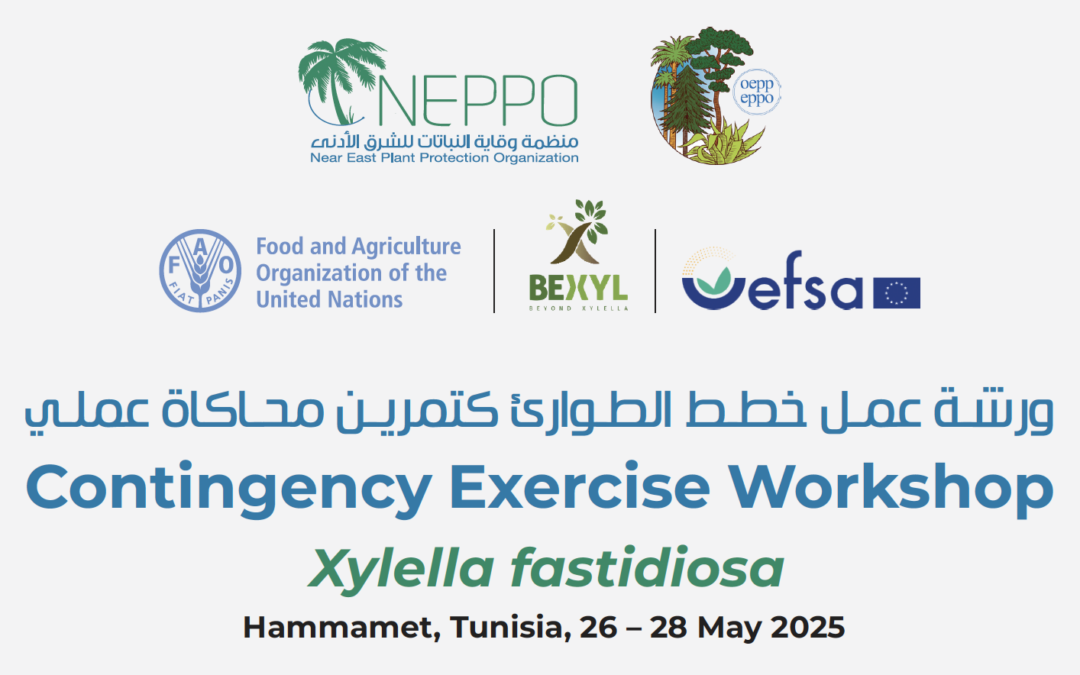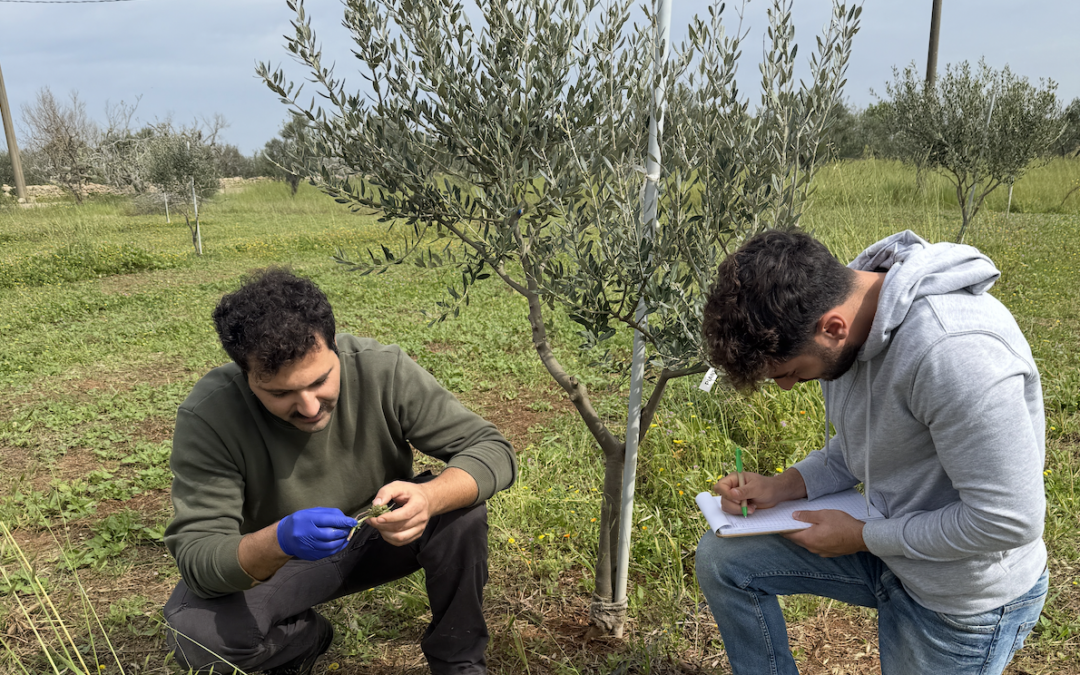The research on disease vectors plays an essential role in modern epidemiology. To better understand how this applies to Xylella fastidiosa, we talked to Alberto Fereres, a BeXyl task leader with more than 35 years of experience in the field.
What is the role of vector insects in the epidemiology of Xylella fastidiosa?
In a few words, they play a crucial role in the plant-to-plant spread of Xylella fastidiosa, also called horizontal transmission. The only way the pathogen can spread in a field is by the activity of insect vectors. If you have an infected plant the disease will not spread without vectors. For Xylella fastidiosa, we are talking about specific insects generally known as xylem feeders that belong to the suborder Cicadomorpha (sharpshooters or spittlebugs). Philaenus spumarius is the most known vector for Xylella fastidiosa in Europe.
How does the horizontal transmission work?
X. fastidiosa can be transmitted quickly in a matter of minutes. Thus, an infected insect can inoculate a healthy plant soon after landing and probing. It also depends on the activity and movement of the insect vectors between plants. Thus, knowledge of the activity, movement and transmission ability of insect vectors is crucial to understand the epidemiology of X. fastidiosa in the field.
What are the main aspects covered by research on Xf vectors?
Currently, there is a great interest in understanding the inoculation mechanism of X. fastidiosa by sharpshooters and spittlebugs, understanding their role as vectors in the different pathosystems, investigating movement and host plants, developing degree-day models to predict their life cycle and more basic investigations on the endosymbionts and microbiota of insect vectors and on their interactions with the insect cuticle at the retention sites (precibarium, foregut). Furthermore, investigation on different tactics to manage insect vectors, such as the development of biological tools (eg. endophytic entomopathogenic fungi), identification of natural enemies (eg. Verrallia sp.), trapping plants to be used as ground cover vegetation or new chemicals or repellents to avoid or reduce transmission.
Can the presence of the vectors be an element helping to detect outbreaks?
In general, even a few vectors can significantly impact the epidemiology of X. fastidiosa. Still, the risk of spread and severity of the disease is higher when there is a high density of vectors. So, an essential element to detect outbreaks is the combination of early detection of the bacteria in infective insects and infected plants. This is a crucial element for managing the disease on time. This must be combined with transmission tests to verify that infected insects can transmit the bacteria. However, early detection of the bacteria in insect species that we know can transmit X. fastidiosa (spittlebugs and sharpshooters) is essential to detect disease outbreaks. It is also important to identify the plant from which those insects come and from which plants they acquire the bacteria before reaching the susceptible crop.
What are the steps to take to gain knowledge of the vectors in Europe?
Despite progress, there are still many gaps and unknowns regarding the knowledge and role of vectors in X. fastidiosa epidemics in Europe. We need to understand insect movement better, improve our capacity to predict the exact timing of nymphal eclosion and determine the environmental conditions necessary to start and end egg diapause of vector species. It is very important to understand the mechanisms of bacterial transmission in more detail, including the characterization of the specific receptors in the precibarium of xylem feeders. Identify which plant species act as a source of inoculum for the insects, what plants could be used as a trap to attract and kill them in nymphal stages – the best timing to adopt control measures to reduce vector populations – and identify new natural enemies and entomopathogens to limit vector populations in areas were X. fastidiosa is already established.
On a more practical level, we must find sustainable solutions to cope with the vectors both in open fields and in nurseries where plants are produced. We must also improve inspection services at EU borders, including passenger controls, to avoid the introduction of new vector species and infected plants from abroad. Recently, one of the known vectors of X. fastidiosa, Draeculacephala robinsoni, was introduced from the USA to northeastern Spain.
What are the best tools to control vector populations in open fields sustainably?
It is important to manage vectors using all available tools (cultural, biological, chemical) to limit their populations. Essentially, there are several ways to manage their populations in regions where X. fastidiosa is already present. One option is tillage of ground vegetation to reduce juvenile populations in the ground cover at the right timing when most of the nymphs have emerged. Another option is using specific plant species as cover crops (ground vegetation) that are poor hosts of known vector species. For example, we know that nymphs of Philaenus spumarius do not favour Sinapis alba as a host plant.
Using a pull-push strategy, combining trapping and repellent plants, may attract adults to lay their eggs but prevent nymphs from developing. Spraying well-known chemicals is an option only when other, more sustainable measures are impossible. All the measures available should be used in a rational manner under the supervision of well-trained extension services.








